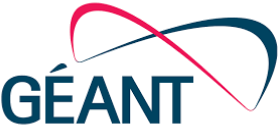What Telecom Research Teaches Us About Leased Line Cost Models
Trusted by:

















Black holes in leased lines have already been talked about in a recent blog post, The Hidden Financial Black Hole in Leased Lines and How to Seal It, we explored where leased line costs quietly drain margins and shared some solid solutions. However, the bigger question remains: what are the most effective ways to permanently close these gaps?
Leased lines are the lifeblood of telecom connectivity. They’re critical for enterprise customers, inter-carrier agreements, and expanding service reach without the CAPEX of new builds. But beneath their reliability lies a financial puzzle: how do operators ensure that the costs of leased lines truly reflect their value?
Research by the Nomura Research Institute (NRI) for Taiwan’s National Communications Commission (NCC), “The Research of Telecommunications Tariff Regulation and Leased Line Cost Model” , sheds insight into exactly this issue and provides fascinating insights into the hidden risk of leased line pricing. It highlights how opaque cost structures, contract inertia, and weak reconciliation create financial inefficiencies that drain operator margins.
For VC4, and many of the operators we work with, these findings validate something we’ve known for years: without a unified, reconciled leased line cost model, operators are leaking revenue they could easily protect.
What the Research Found: Cost Blind Spots in Leased Lines
The NRI study examined how leased lines are priced, billed, and regulated in wholesale markets. A few key points stand out:
- Tariff Regulation and Transparency
The study notes that leased line tariffs often lack transparency. Without cost-oriented models like TELRIC (Total Element Long-Run Incremental Cost), wholesale providers can set prices that don’t align with the actual usage or value delivered. This imbalance creates an uneven playing field and leads to inflated OPEX for operators.
- Billing vs. Reality
One striking observation is how billing frequently diverges from real network conditions. Operators pay for bandwidth or circuits they don’t fully use, or worse, for lines that no longer carry traffic at all.
- Contractual Inertia
Auto-renewals and long-term agreements trap operators in above-market rates. Because contracts aren’t systematically linked to inventory, they roll over unnoticed, often for years, draining budgets in silence.
- Weak SLA Enforcement
The research highlights how SLA (Service Level Agreement) breaches are difficult to track or prove without structured data. Operators lose potential credits because they can’t present vendor-accountable, time-stamped records. To put it simply: when leased line costs aren’t connected to operational reality, operators lose money.
Why This Matters for Operators
The financial implications are serious:
- Paying for phantom circuits that no longer exist.
- Overpaying for underutilized bandwidth.
- Missing out on SLA credits.
- Locking into outdated pricing models.
For CFOs, this is not a technical inconvenience, it’s a margin erosion problem. For operations teams, it’s a visibility challenge. And for the boardroom, it’s a strategic blind spot. That’s why the research resonates so strongly with VC4’s mission. We’ve built Service2Create (S2C) to directly address these blind spots, transforming leased line management from a static cost center into a dynamic, accountable, and financially intelligent process.
VC4’s Answer: The S2C Leased Line Module
The NCC study underscores the need for cost transparency, reconciliation, and accountability. That’s precisely what VC4’s Leased Line Module in S2C delivers. Here’s how:
1. Reconciled Inventory Meets Vendor Contracts
S2C doesn’t let contracts sit in PDFs or spreadsheets. It ingests contract data – tariffs, terms, renewal dates and ties them directly to network inventory. Each leased line is mapped to its physical and logical routes, services, and customers. If a line is decommissioned, the contract is flagged. If renewal dates approach, alerts surface. This is how you stop paying for phantom capacity.
2. Usage vs. Billing Transparency
By correlating traffic data, port-level usage, and logical overlays with vendor invoices, S2C shows exactly which leased lines are worth their cost and which aren’t. Operators gain a clear utilization-to-cost ratio, making it easy to spot idle backups, oversized bandwidth, or redundant routes. This aligns perfectly with the NRI’s finding: operators need models that show costs in context.
3. Automated SLA Audit Trails
S2C continuously records outages, Mean Time to Repair (MTTR), and SLA breaches per leased line. That means when a vendor misses their SLA, operators have timestamped, verifiable proof, turning disputes into credit claims backed by hard data. Instead of letting SLA penalties slip away, operators reclaim value already written into their contracts.
4. Preventing Renewal Inertia
Auto-renewal is one of the most damaging cost blind spots. S2C prevents it by alerting users well before contracts roll over. And because it knows whether the leased line is active, redundant, or unused, it recommends whether to renegotiate, cancel, or retain the lease.

Why VC4 is Unique in Tackling This
Plenty of OSS or inventory tools claim to manage networks. But most stop short of linking operational intelligence to financial outcomes.
VC4 is different. We bring:
- Decades of expertise in inventory reconciliation and GIS-enabled service mapping.
- Unified physical, logical, and financial modeling—not just technical dashboards.
- A customer-proven leased line module already helping operators recover millions in hidden costs.
Where the NRI report makes the case for cost-oriented leased line models, VC4 turns that principle into live practice, inside the operator’s own OSS stack.
The Bigger Picture
Telecom operators face pressure on every front: fiber build-outs, 5G densification, and relentless competition. While revenue strategies focus on new products and customer acquisition, margin control is equally critical. Leased lines represent one of the most overlooked cost centers in telecom. They rarely fail, rarely generate alarms, and often sit outside the daily visibility of engineering teams. That makes them perfect candidates for the kind of “financial black hole” the NRI report describes.
VC4 S2C ensures operators don’t just manage their leased lines. They optimize them, reconcile them, and reclaim the margin they deserve. Because in today’s telecom world, it’s not enough to build more fiber. You also have to make sure the contracts, costs, and commitments you already carry are delivering real value.
From Research to Reality
The NRI/NCC Leased Line Cost Model Study highlights the systemic risks of unmanaged leased line pricing and opaque tariffs. It calls for transparency, accountability, and smarter cost modeling. VC4’s Service2Create takes those recommendations out of the report and into the operator’s NOC, finance department, and boardroom.
With S2C, the black hole becomes a source of clarity. Costs are reconciled. Contracts are managed. SLAs are enforced. And operators finally control one of the most overlooked drains on their margin. To see how much your leased line portfolio is really costing you, and how much you could save reach out to VC4 or book a demo today.
Because the best margin recovery isn’t found in new revenue. It’s reclaimed from costs you shouldn’t be paying.






